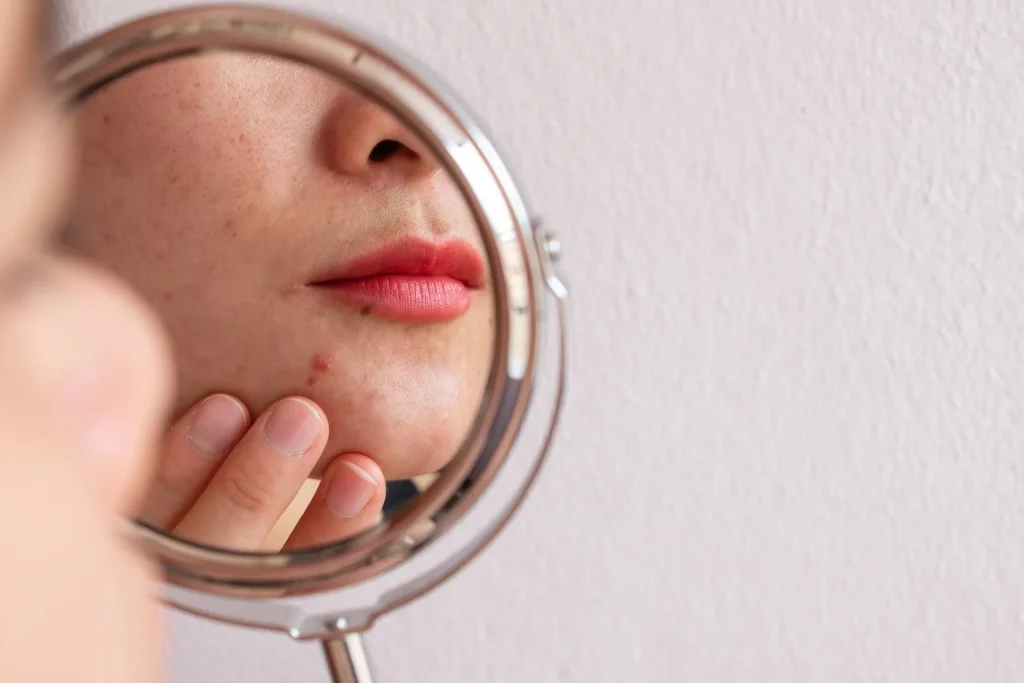Menu
- Home
- Ask Our Pharmacist
- Your EFAP
- Your Wellness
- Workplace Wellness
- Get Help Now
close

Acne is a skin condition common in youth and young adults between the ages of 12 and 24, but there is also a percentage of adults who will experience acne breakouts into their 30s and 40s.
Acne is caused by inflammation of the oily glands in the skin. When the duct of the gland becomes blocked either by layers of skin, fatty secretions or dirt, a mini-cyst or pimple forms.
Just as acne can range from mild to severe, acne treatments also vary, depending on how serious the problem is. Aside from physical symptoms, which can include permanent scarring in severe cases, uncontrolled acne can also significantly affect an individual’s self-esteem and mental health.
Some of the most common triggers include:
In some cases, it can be helpful to pay attention to your breakouts and ask yourself if anything in your diet or daily routine triggers a breakout or worsens your existing acne.
While some people will attest to certain foods causing acne (i.e., white bread, breakfast cereals, potatoes, corn, cow’s milk), this is not proven. However, it is always a good idea to eat a variety of fruits, vegetables, and complex carbohydrates, and reduce your intake of highly processed foods and sugary drinks.
Aside from avoiding triggers, you can try an over-the-counter cream or gel that contains salicylic acid or benzoyl peroxide. These products are designed to clean the area, dry up the oiliness, peel the skin and eliminate the acne bacteria present. But be aware that these products can discolour your clothes, bed sheets, and towels. Always apply a thin amount to the skin and remember, less is more.
If you do not see any change in your acne after one or two months of using an over-the-counter product, talk to your health care provider about obtaining a referral to a dermatologist. This medical specialist can assess your condition and recommend treatment with prescription medication that may include:
If you are prescribed one of these medications, your health care provider will talk to you about potential side effects. Individuals taking these drugs should not smoke, as it can increase the potential for adverse effects on the heart and blood vessels.
The information provided in this article is for personal use, reference, and education only. ASEBP does not provide medical advice. Before starting any medication or product, you should always consult with your pharmacist, health care provider, or call Alberta Health Link at 811.

ASEBP covers most prescription drug medications used to treat acne. Use the Drug Inquiry Tool on My ASEBP to find out more about your coverage details.
If you have ASEBP’s Employee and Family Assistance Program (EFAP), you and your dependants can access four free hours of individual counselling each year. Persistent acne can affect mental well-being, and talking to an EFAP counsellor can help you cope with feelings of anxiety or depression.